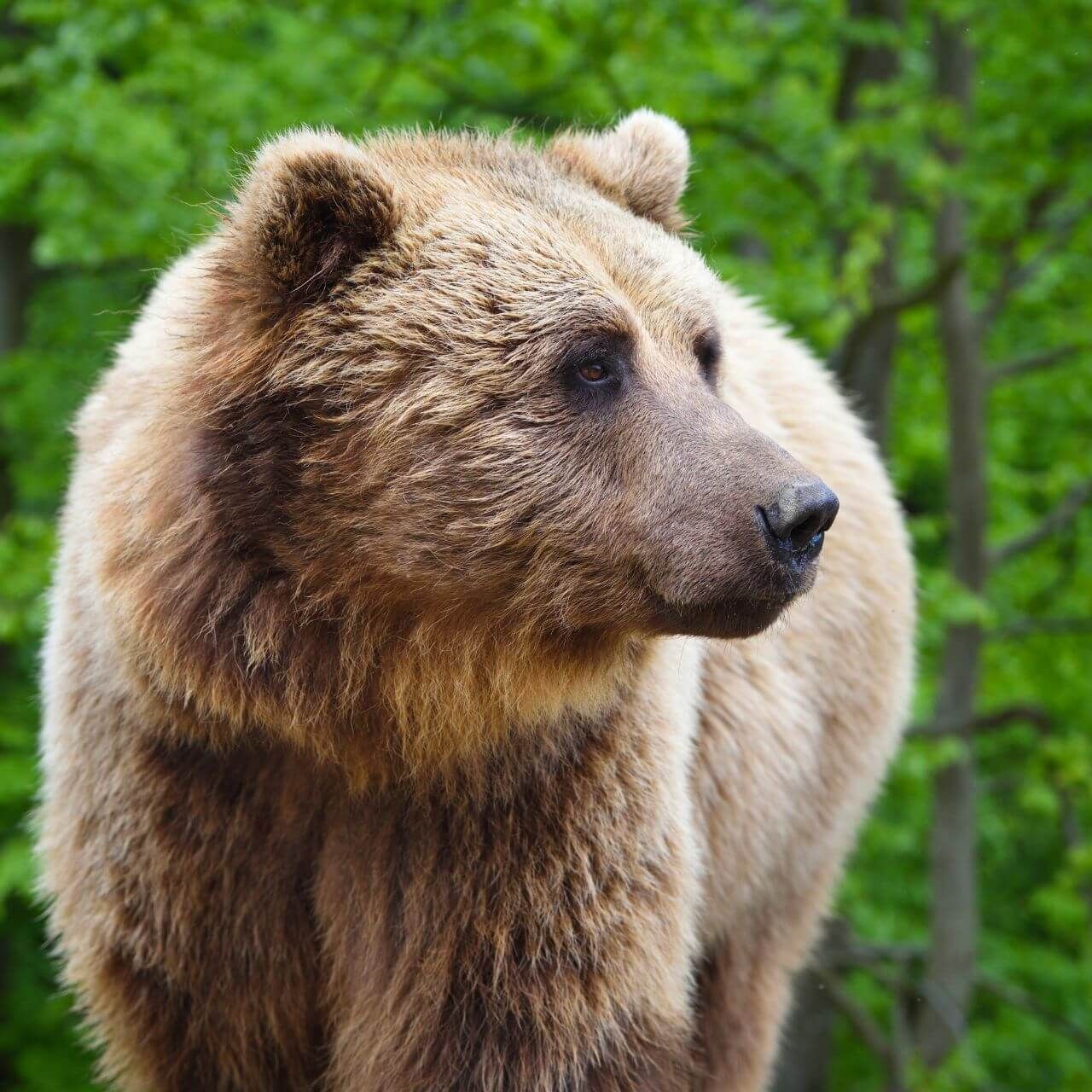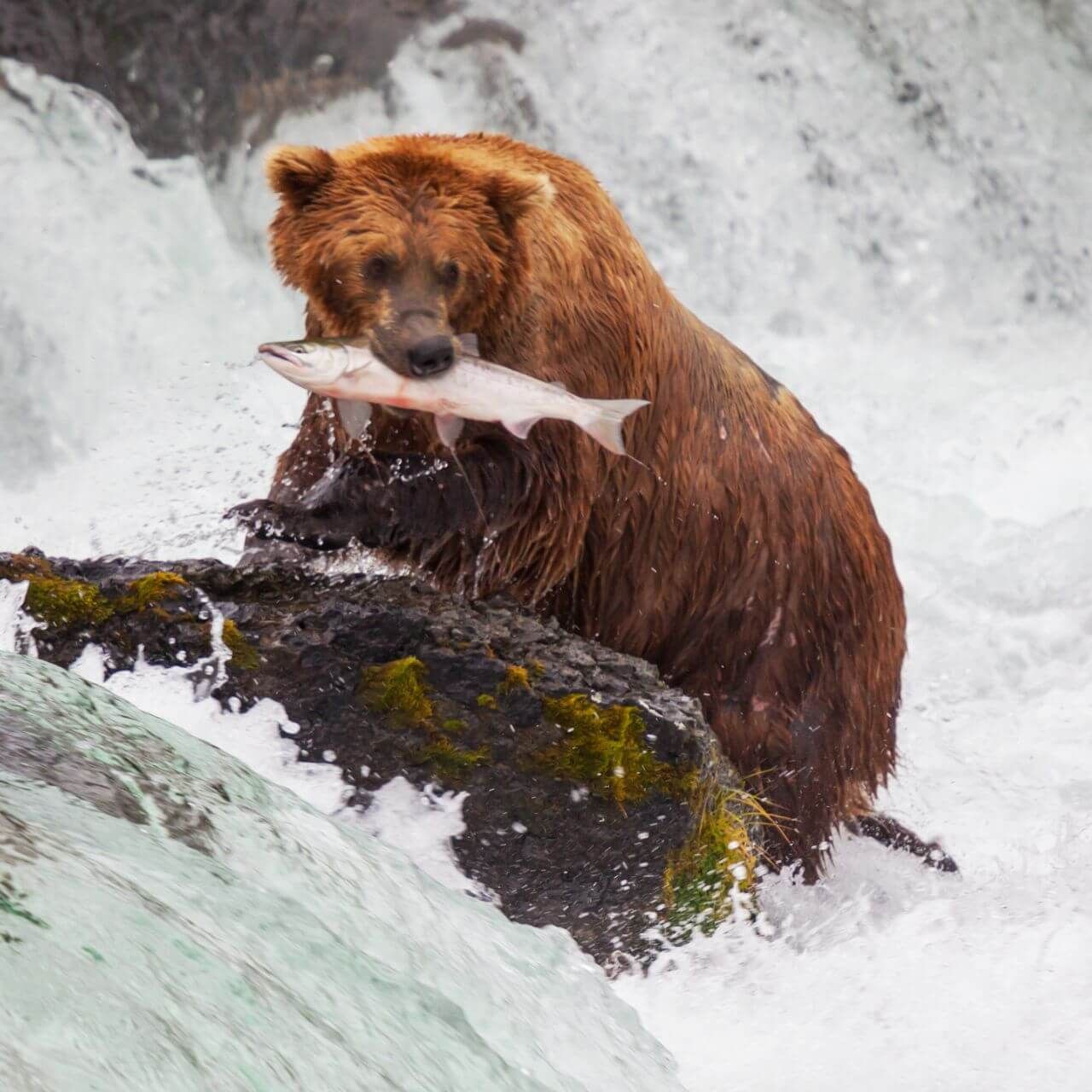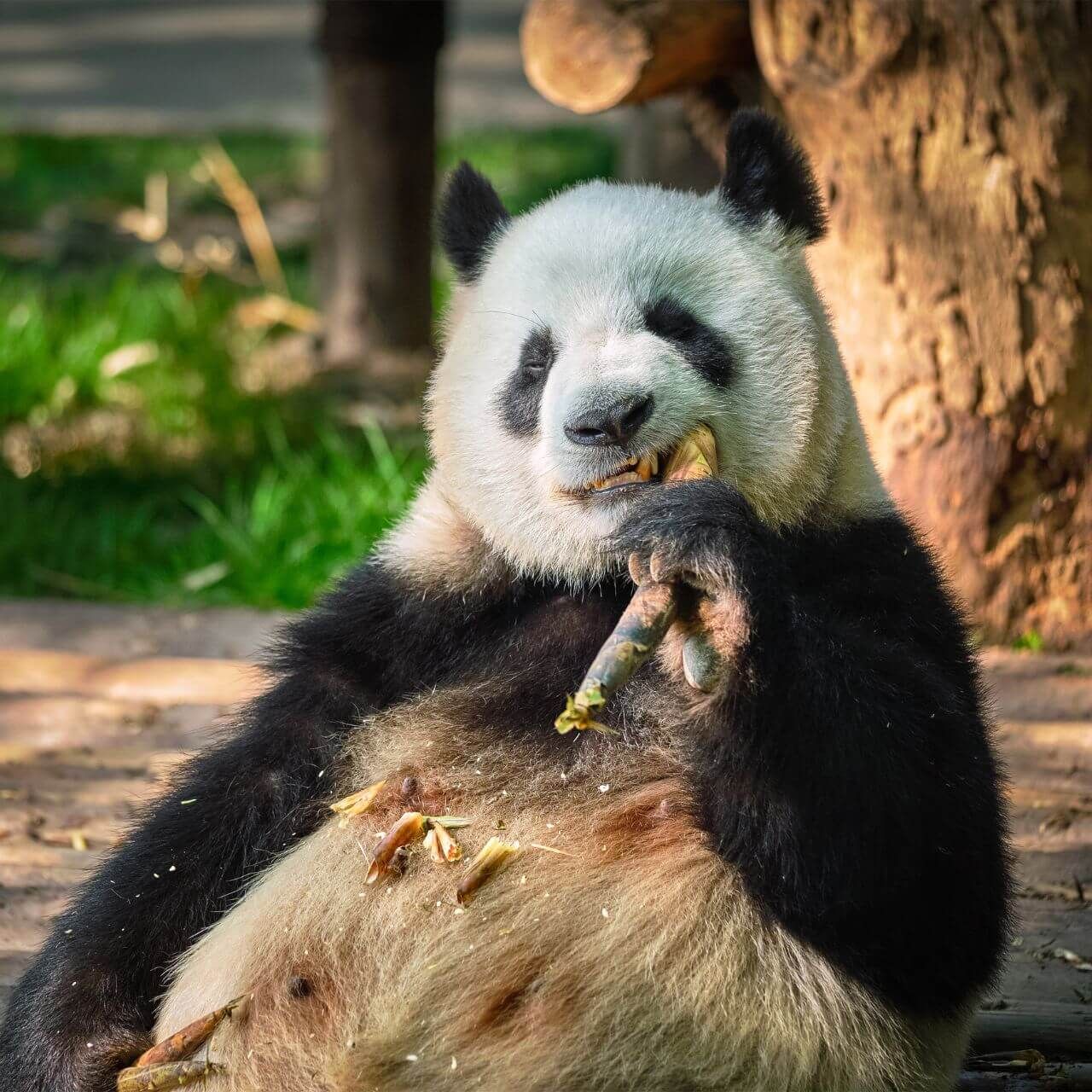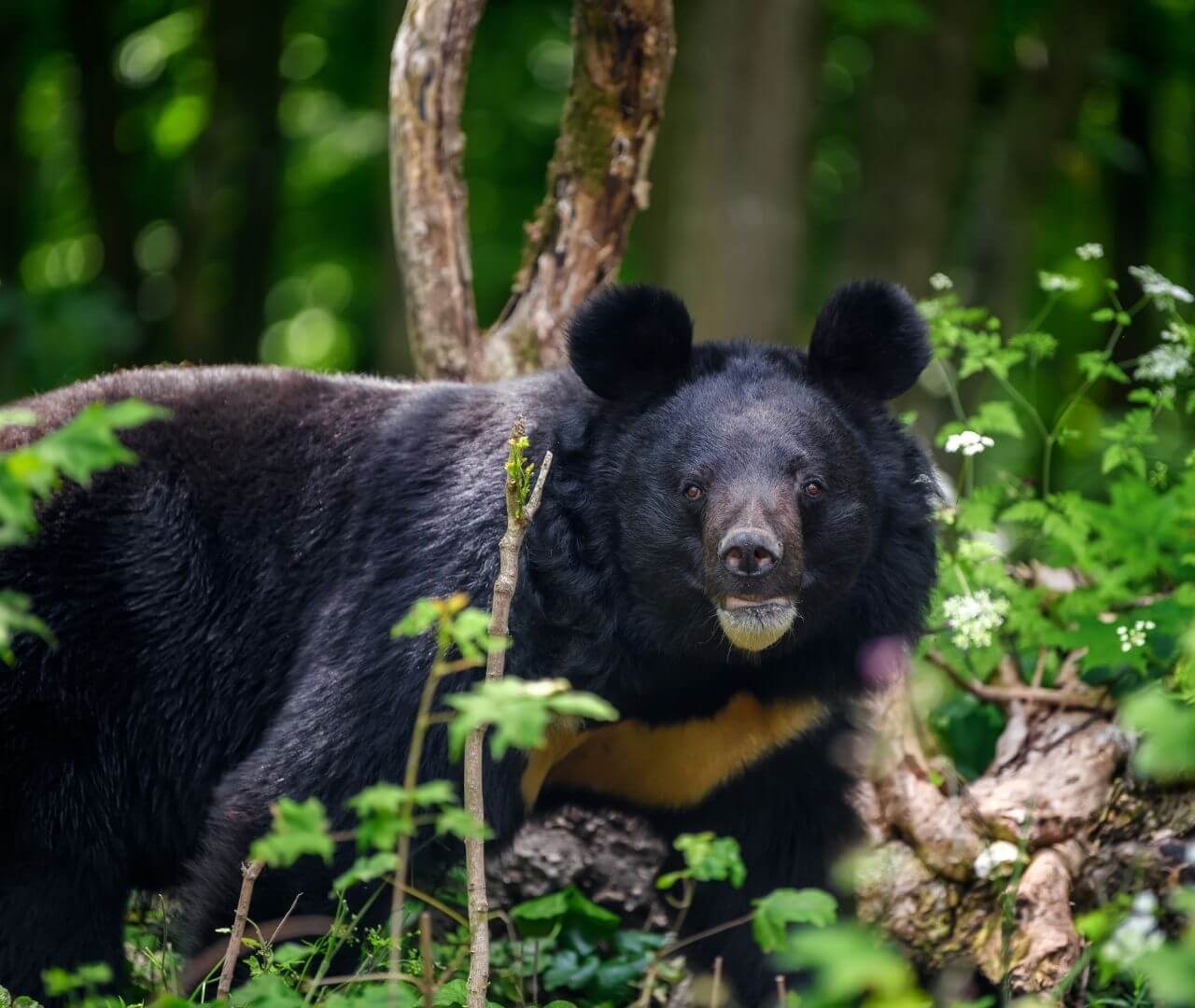Bears

Let's Learn About Bears
Word of the Week
Hibernation
Hibernation is a long period of inactivity that typically occurs during the winter. During hibernation, animals reduce their activity level, body temperature, and metabolism.
American black bears and some subspecies of brown bears hibernate, though scientists disagree if it is true hibernation or just a period of low activity.
Fast Facts

Where do bears live?
Bears live on 4 continents in a huge variety of habitats.
Bears live in North America, South America, Europe, and Asia. Some species, like sun bears, live in tropical forests while others, like the polar bear, live in freezing Arctic ecosystems. Pandas live in bamboo forests while Andean bears in the cloud forests of the Andes mountains.
What do bears eat?
It depends on the species.
Bears are often thought of a ferocious carnivores, but only one species is a true carnivore--the polar bear! Pandas are herbivores eating mostly bamboo, while all other species are omnivores. Their diet often changes with the season as different food becomes available.


What traits do bears share?
Bears are large mammals that...
- Have small, rounded ears.
- Have sharp claws.
- Have an excellent sense of smell.
- Have tiny tails.
How many bears are there?
There are 8 species of bears!
The largest species is the polar bear, the smallest species is the sun bear. The other six species are the American black bear, brown bear, Andean bear, Asiatic black bear, panda bear, and sloth bear.

Species Spotlight
Asiatic Black Bear
Ursus thibetanus
Asiatic black bears, also known as moon bears, are native to the forests throughout many parts of southern Asia. Like with all bears, males tend to be larger than females. Male Asiatic black bears average about 300 lbs, but large males can weigh more than 400 lbs! Even with their large size, Asiatic black bears are impressive climbers. Like their close relatives, American black bears, along with sun bears and Andean bears, Asiatic black bears are semi-arboreal, meaning they spend of their lives up in the trees. They have very strong arms and have been observed climbing without using their back legs at all! When resting or hibernating, Asiatic black bears will often use tree cavities high off the ground as well as in caves or dens on the ground.
While many people picture bears as ferocious carnivores, Asiatic black bears are actually omnivores. Most of their diet consists of insects, beetle larvae, eggs, mushrooms, grasses, and fruit. Their diet also changes with the season! As seasons change, different bugs, fruits, and seeds become avabile. When food is plentiful, Asiatic black bears will gorge themselves to develop fat stores. When food becomes scarce, Asiatic black bears will either adjust their diet or hibernate until food becomes more available. Like most forest animals, Asiatic black bears are threated by deforestation and we can all do our part by buying products with sustainable palm oil, buying sustainably harvested paper products, and by reducing our greenhouse gas production.
Conservation Corner
Threats to Bears
With 8 species of bears on 4 continents in a huge variety of habitats, they face an incredible amount of threats. Different species face different threats. Bears of the same species even face different threats in different parts of their range. Let's look at what is threatening bear populations.
Climate Change
From the tundra to the rainforest, Earth's changing climate is affected bears (and every other animal!). The sea ice that polar bears depend is shrinking. The changing temperatures affect plants blooming and producing seeds, which changes food availability. Extreme droughts and floods are also affecting food availability.
Habitat Loss
As the human population continues to grow and expand, wildlife is being displaced. Forests, including the sun bear's rainforest, the panda's bamboo forest, the American black bear's temperate forest, and the Andean bear's cloud forest, are being cut down and burned to collect wood and make room for farms. As cities grow, bears lose their home.
Poaching
Bears have been hunted for centuries for many reasons. Ranchers hunt bears who prey on their livestock. People hunt bears for trophies like their feet or fur. Bears are also hunted for their gall bladders which are used in traditional Asian medicine.
Many conservation organizations are working to protect bears and their homes, but you can help bears and other wildlife, too! Keep your local environment clean, respect the animals in your environment, and reduce your impact on the environment by using sustainable materials, recycling properly, and using less energy.
The Business of Bears
Determine if each statement below is true or false.
Bear Challenge
Place each bear species in the correct category to explore the diversity of bears!
Organizing Bears
Create three bear charts on construction paper using the template attached. Cut out each bear species and place it in the appropriate place on all three charts!
Learn More!
Glossary
Adaptation
The process by which a species becomes more fit for its environment over the course of several generations. It is a result of natural selection.
Arctic
Region around the North Pole with freezing temperatures and extreme seasonal changes.
Camouflage
The ability for an organism to blend into their surroundings usually to hide from prey or predators.
Carnivore
An animal that eats other animals.
Ectotherm
An animal that relies on the outside temperature to regulate their body temperature (reptiles and amphibians). Also known as cold-blooded.
Endotherm
An animal that regulates their body temperature internally (mammals and birds). Also known as warm-blooded.
Herbivore
An animal that eats mostly plants.
Hibernation
Hibernation is a long period of inactivity when animals reduce their activity level, body temperature, and metabolism during the winter.
Invertebrate
An animal that has no bones.
Mammal
A group of endothermic (warm-blooded) vertebrates that are covered in hair, produce milk for offspring, and generally give birth to live offspring.
Omnivore
An animal that eats both plants and animals.
Palm Oil
Oil produced from the fruit of the African oil palm tree generally in Southeast Asia and Africa that is used in many everyday products.
Predator
An animal that hunts other animals for food.
Prey
An animal that is hunted and eaten by another animal.
Species
A closely related group of animals with similar characteristics that are capable of reproducing (example: tigers).
Subspecies
A group of animals within a species that are genetically different from other groups in the same species (there are 6 subspecies of tigers).
Vertebrate
An animal that has a backbone.
Sign Up for our Newsletter
Stay up to date with new adventures, live classes, deals, and more!

Helpful Resources
*Please note we do not offer refunds for EdZOOcating Adventures memberships. We recommend you explore the 3-day free trial prior to subscribing!*






